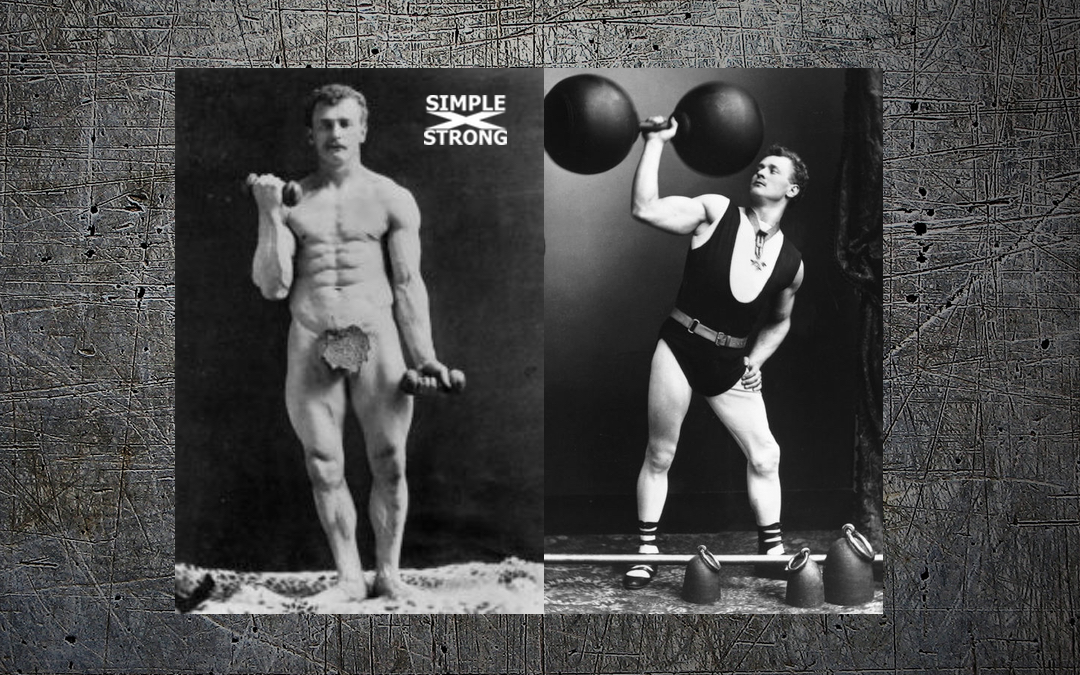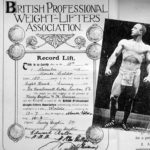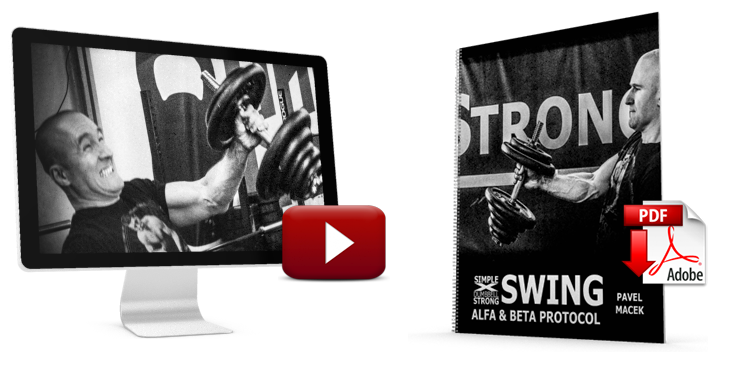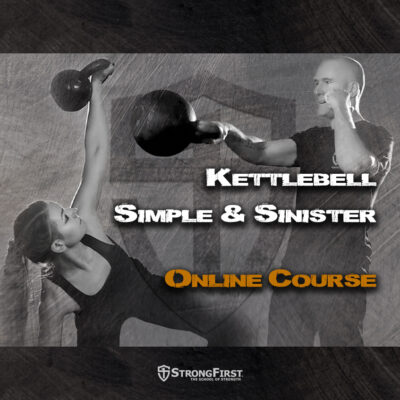When you read about the incredible feats of the many old time strongman – and then you study their books – you will certainly notice that many of them recommend high rep exercises with very light weights, and only in the end occasionally mention lifting the heavy weights.
Did really Sandow achieved his incredible feats of strength by lifting light dumbbells? How about his mentor, prof. Attila? In 1913, Richard K. Fox has published a book called Prof. Attila’s Five Pound Dumb Bell Exercises. Attila’s scrapbook however shows many women practicing with big globe dumbbells certainly way heavier than five pounds, and altogether different exercises than alternating curls – get-ups and one arm presses…
Henry Higgins says clearly his excellent Strength and Muscle Course (around 1915 – modern reprint available at Bill Hinbern’s website superstrengthtrainig.com):
Often you will hear people say that it is possible to become very strong and to get good development by practicing light exercises… I never knew a man who built himself up except by very heavy work. Light dumbbell drills never made anyone strong or muscular.
Venables (1942) agrees:
The very light dumbbells found in many gymnasiums have little value as strength and muscle builders. Any exercise is better than no exercise, but we obtain from exercise what we put into it, and with very light dumbbells only slight gains are made. The old timers did not have the adjustable dumbbells we have at present, so graded progress was more difficult. Most gymnasiums would have a pair of 50’s, perhaps a pair of 75’s, 100’s and a single dumbbell weighing 150-200 lbs. or more. While a pair of 50’s are very easy in most exercises for men who train at the York Bar Bell gym, for instance, or any other advanced weight men, they are very heavy for others. There is such a variation in the strength of the various muscles of the body that only a full range of weights will accommodate complete training.
So why many of the famous names advocated light dumbbell training? Bill Hinbern explains:
Most correspondence courses put out commercially by the muscle barons of the early 20th century promoted high repetition exercises using light weight dumbbells or apparatus if they included equipment at all. Anyone with an ounce of common sense can understand that the awesome strength demonstrated by the performers of that era was not a product of light weight, high repetition exercise.
The reason that such methods were promoted by the muscle merchants of the day was very simple. Marketing. That is, it was by far easier to convince you, the potential customer, to use “quick, easy, inexpensive” methods than to sell you on the idea that building great strength took time, effort and expensive heavy equipment.
Listen to to the wise words of Arthur Saxon (Saxon, 1906):
… use heavy ones with fewer repetitions rather than light bells with numerous repetitions.
So Are Light Dumbbells Totally Useless?
With all above being said, Higgin’s starts in his own course with 5 lb. dumbbells, and high reps – 10, 20, and eventually 40 reps! Why? Let’s not throw the baby away with the water.
Higgins, a big proponent of progressive heat lifting, makes sure to note that light weight/high reps are recommended for out of shape beginners. Higgins says:
I taught drills of this sort to people who wanted to get the ordinary hygienic benefit from exercise, and I knew that my pupils did derive that benefit. But they never got strength or development from the light drills, and I never promised them that they would. On the other hand all my pupils who went in for strength and development were successful when I put them at heavy training.
Any man who says that he can build a person up and make him very strong by the use of light exercise is deceiving himself. He can certainly improve the health of the pupil by giving him exercise of this character. But that is the extent of the usefulness of this sort of exercise.
Sandow recommended in his earlier works the same thing:
“It is recommended that the pupil, before proceeding to the heavy weights, should spend at least three moths in performing the preliminary light-weight exercises.”
(Mercer, 1894).
As for the exercises selection, Higgins prescribes to do curls (only in the first weeks, though, sorry), presses, cleans, cleans & presses, squats, swings – all with two light dumbbells. After 6 weeks, Higgins progresses right away to to 25 lb. dumbbells, and every subsequent 6 weeks to progressively heavier weights – and in quite big jumps: 50, 75, 100, 125, all the way to 140 lb. and beyond.
To the already active individuals Higgins (think StrongFirst kettlebell foundation of Simple & Sinister) recommends to skip the 5 and 25 lb. dumbbells, and start right with 50 lb. dumbbell, and proceeds to lower reps and put emphasis on lifts like clean, press, clean and press (both with one or two dumbbells) jerk and bent press.
Use light dumbbells for following purposes:
- As weighted mobility drills, similar to light Indian clubs training. Attila’s, Sandow’s, or Hackenschmidt’s books contain various sets of exercises that we have distilled in “Dumbbell Super-Joints” move-prep/warmup.
- As dumbbell intro program when starting the dumbbell training, or learning new lifts. High reps – sets of 5-10 (as recommended by Hackenschmidt), or “ladders” – from (2, 3, 5) to (3, 5, 7) to (5, 7, 8) to (5, 7, 8, 10), as recommended by StrongFirst Kettlebell Course plan – will ingrain correct technique and prepare the joints and connective tissue for subsequent true (heavy) lifting.
As for strength and power, Higgins (et al.) is absolutely clear: “
The secret of great strength, then, is seen to be matter of daily training with heavy weights and dumbbells.
Stay healthy, lift heavy, and get strong!
Note: The text above is an excerpt from a Hardstyle Dumbbell Manual. If you are interested in full dumbbell lifting program, please check out our One-Arm Dumbbell Swing Tutorial [Free Video & .pdf Manual] and subscribe to our newsletter.
-
Sale!

GGP: The Great Gama Protocol [ONLINE COURSE]
Original price was: $149.$99Current price is: $99. -
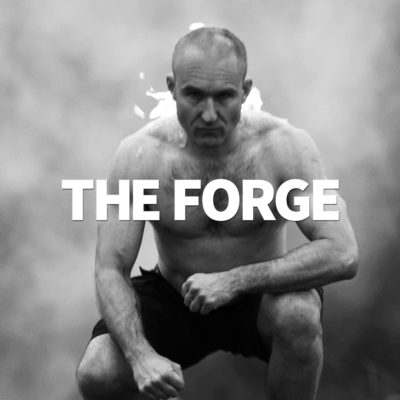
THE FORGE: Full Year’s Transformation Program [ONLINE COURSE]
$499 -
Sale!

SFG I StrongFirst Kettlebell Instructor Certification – November 8-10, 2024, Prague, Czechia
$1395 – $1595 -

Hard Style Dumbbell Swing [VIDEO+MANUAL]
$0
